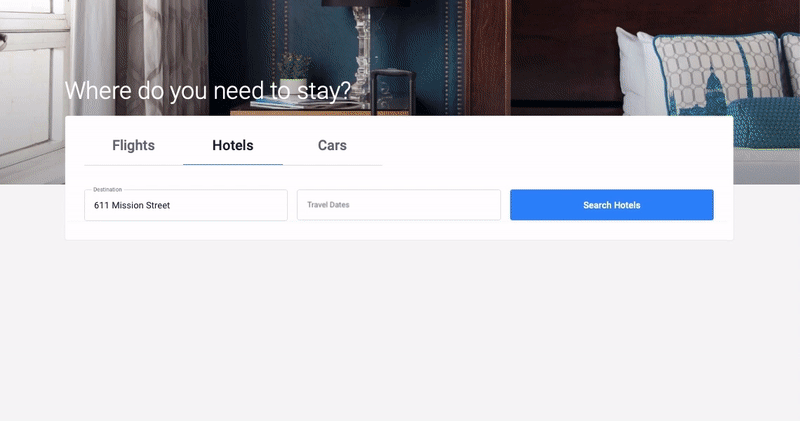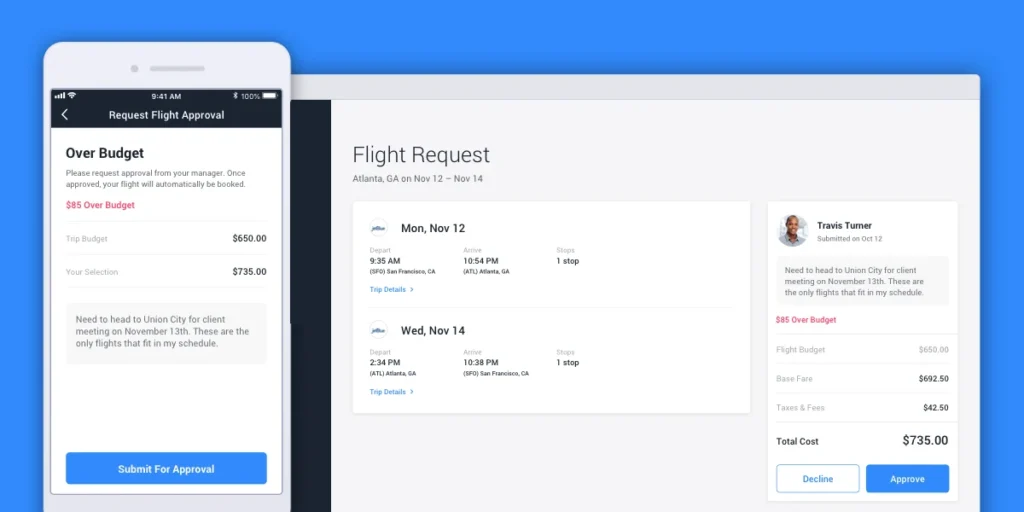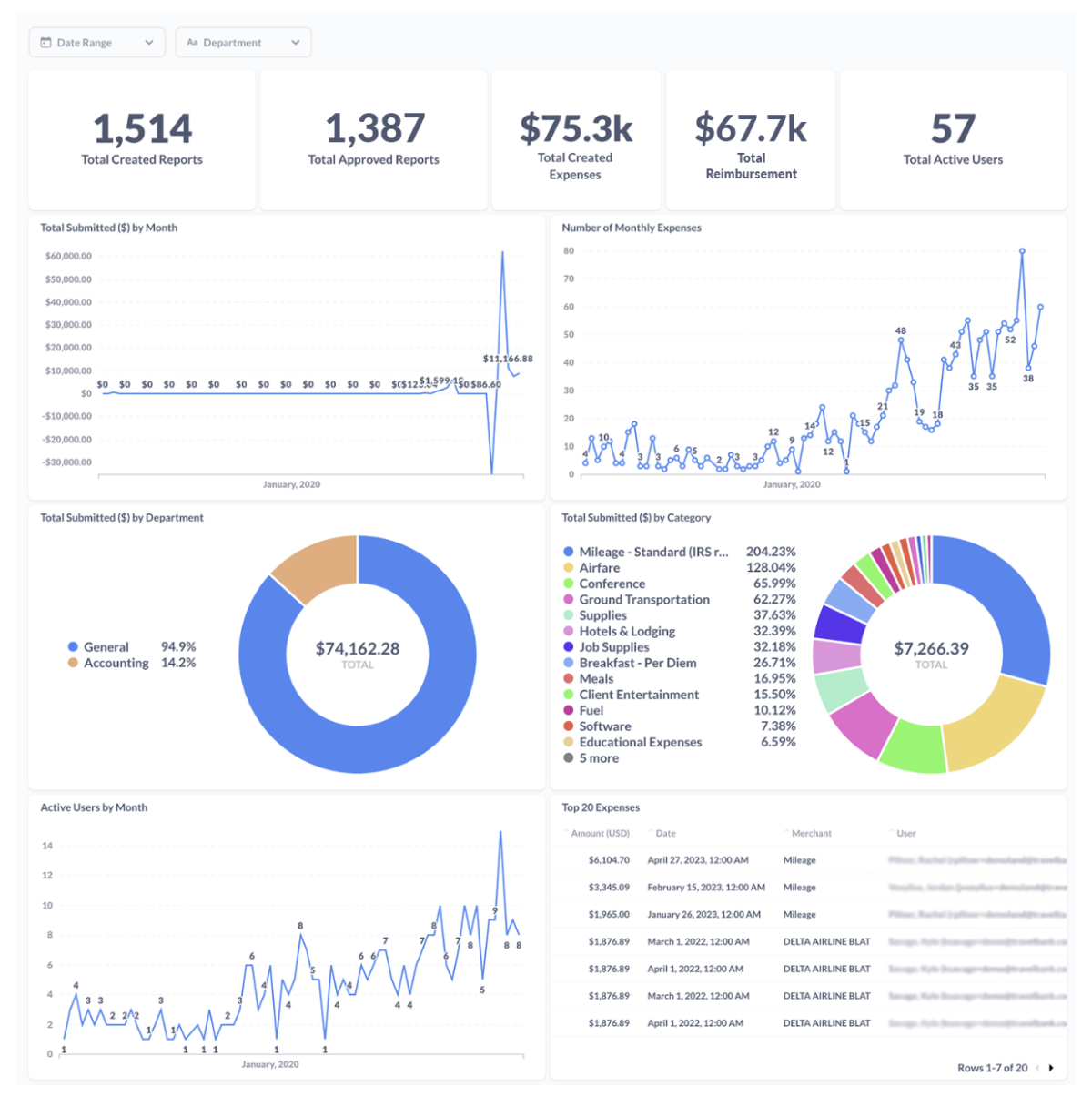How to Reduce Business Travel Spending
If you’re struggling to reduce business travel spend, you’re not alone. In a 2024 commissioned Total Economic Impact™ study, Forrester Consulting found that travel and expense (T&E) spending is significant at many organizations, and difficult to rein in. The good news, however, is that organizations can:
- reduce the cost of every trip with behavior-nudging software
- more clearly estimate travel expenses before approving a trip
- and unearth potential vendor relationships from company-wide travel data
Encouraging Cost-Effective Travel Decisions to Help Reduce Business Travel Spend
For end users, booking flights is a matter of urgency and convenience. Even when companies have travel booking software, most employees dread the cumbersome interface and simply book travel directly through consumer sites like Google Flights or Kayak. And, when booking on their own, employees frequently choose their preferred providers to maximize individual perks (like airline miles or hotel points). It’s a lose/lose/lose for companies:
- they don’t have visibility into wasteful employee travel decisions
- employees don’t leverage corporate perks or tax statuses
- and companies don’t earn rewards on the travel
In the Forrester study, a director of ERP solutions at a healthcare organization commented: “Travel for us was a free-for-all situation. … People booked at a premium and chose carriers based on their personal preference or personal rewards, not on price. We knew there was extra spending we were not catching.”
>> Related: Comparing Travel Management Software vs. Open Bookings vs. TMCs <<
Instead, companies should leverage a travel booking platform with a friendly user experience that rivals innovative consumer sites to help reduce business travel spend. Employees should be able to book and bundle flights, hotels, and rental cars – using corporate rates – for maximum savings. And the UX should flag over-budget options and present cheaper alternatives during the booking process.

Estimate Trips Beforehand
Companies should also make it simpler for employees to estimate trips – not just with assumed averages, but based on destination, dates of travel, and actual market rates.

By reliable predicting the costs of future travel, managers can more confidently grant approvals, estimate the trip’s ROI, and reduce business travel spending as needed.
Seeing Budgets = Smarter Spending
Travel budget reports are often done quarterly, when it’s too late to correct over- and under-spending. Instead, companies should increase visibility into travel spend (without further burdening the accounting department!)
User-friendly and customizable dashboards can empower departments to monitor real-time T&E spend, outlier behaviors, and top spenders/savers in one place. Managers should also set up alerts when an exception or a threshold is met so they can monitor and reduce business travel spend, if necessary, proactively.

In the Forrester study, a director of procurement in education shared: “[when] people have visibility and agency over their budgets [they’re] a little more diligent about what they’re doing. They care more because they can see their budgets and see the savings.”
Identify Frequent Expenses or Destinations
By reviewing frequent expenses or destinations, your organization can negotiate discounts with specific hotels or car rental companies for future trips. In the Forrester Study, a director of ERP solutions at a healthcare company noted: “By tracking spending and seeing where we travel the most, we’ve been able to negotiate preferential deals with hotels and car rental companies to see even more savings. We think this benefit will only grow over time.”
Reward Savers
By further incentivizing employees to spend company money as if it’s their own, business travelers actually are more cost-conscious and will save money by dining at less expensive restaurants, booking earlier, staying at Airbnbs, and booking cheaper airfare. On average, we see travel costs drop by 30% once rewards are enabled.
With TravelBank, you can offer cost-conscious employees a percentage of the money they save. We typically suggest dividing the dollars saved right down the middle. For instance, if the calculated hotel budget is $300 and the employee only spends $200, $100 is saved. The employee is rewarded 50% of the savings for making a cost-conscious decision and the company still saves $50. We have found that more often than not, employees will choose to receive points toward gift cards over splurging on business travel expenses that are avoidable. Even with the money spent on rewards, companies still reduce business travel spend.
>> Related: Why Orgs Consistently Struggle with T&E Policy Adherence <<
How to Reduce Business Travel Spending with TravelBank
During the study, Forrester found that the interviewed organizations saved 10% per trip with TravelBank, in addition to saving money from increased policy adherence, plus time savings for managers, finance, and end users. Forrester’s study modeled that an organization with 250 employees traveling once a quarter would benefit from $211,382 cost savings over 3 years. What could you save?




